
“A picture speaks a 1000 ducks, err… I mean words.” – One of the above is better at conveying the message!
When you are out watching birds, what matters most is having fun and observing our feathered friends go about doing the things they do. But every now and then, for various reasons, one feels the need to document what is being observed. Documentation can come in the form of field notes, a quick sketch, a sound recording, a photograph, or a video. Good documentation is also, quite often, the difference between a record that can add to our knowledge and one that may never be truly verifiable.
If you struggle with writing and drawing while birding, then perhaps you’ll never really take to jotting down meaningful notes or making quick sketches in the field. If you’re loath to carrying multiple pieces of equipment out in the field, then sound recording and taking photos or videos may seem like a bit of a stretch as well. But for as long as you value the worth of documentation, there are two tools that we all (usually) carry when out birding – a pair of binoculars and a smartphone. And these two can be a very powerful combination if you want to take photos of birds. (Note: You can record bird sounds using a voice recording app in your phone as well!)
This article is only focussed at using your phone with your binoculars to take images of birds.
Step 1:
Get your binoculars out and lift/release/move the eye cup on your binoculars such that they offer maximum eye relief (basically, the distance between the user’s eye and the binocular’s eyepiece lens).
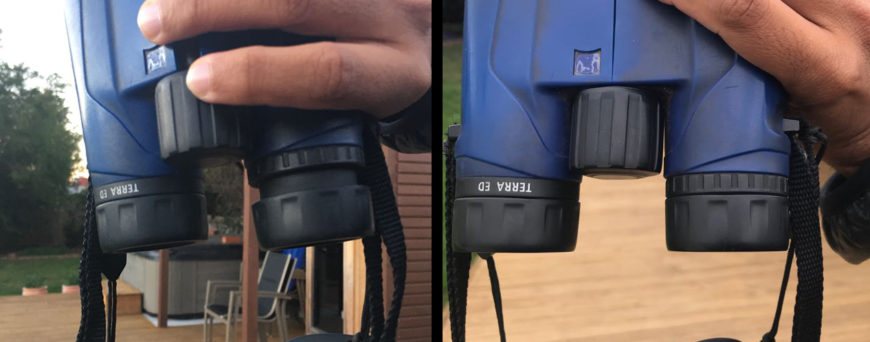
Left: Eye cup extended/lifted up
Right: Eye cup fully retracted
Note: Not all binoculars (especially some older models) have movable eye cups. In this case you will have to skip this step.
Step 2:
Now that your binoculars are ready, the next step is to set up your phone. This is simple – just open your phone’s camera app! If your phone has a foldable case, it is recommended that you remove the case before using the phone.
Step 3:
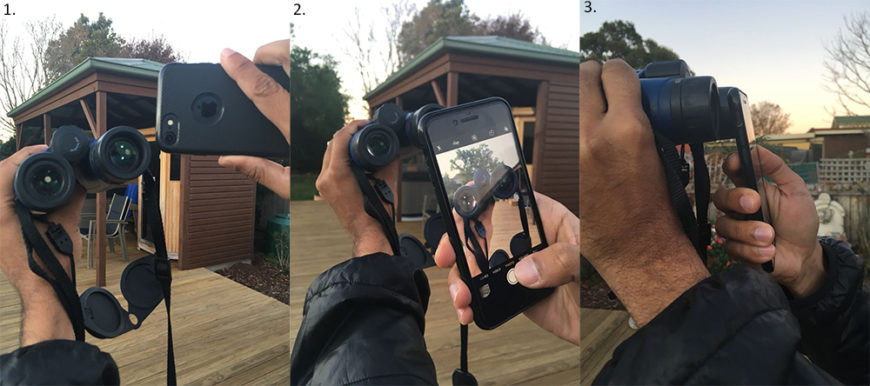
Align the camera lens (located at the back of your phone) with the eyepiece lens of your binoculars
Now you need to align the phone’s camera lens (located at the back of the phone) with the eyepiece of your binoculars. Keep both your hands stable, one holding the binoculars and the other holding the phone – I use my left for my binocs and my right for the phone. Keeping your binoculars in place and focussed on the subject you want to photograph, bring your phone’s camera lens to your binocular’s eyepiece lens. You might have to move the phone around a bit to figure out the best fit for your phone-binocs combination. You might get black circular edges on the frame, but it’s all OK as long as the centre of your image is crisp and free of shadows.
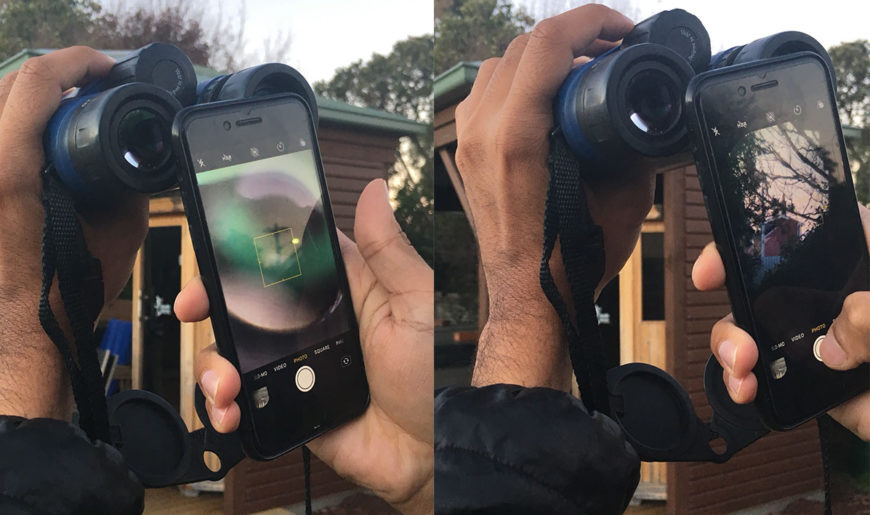
Left: You’re doing it wrong if there are too many shadows in the image.
Right: You’re doing it right if the image you are seeing in your phone is what you would have been seeing if you were looking through the binocs with your eyes.
Note: For binoculars without eye cups, move the phone close to and away from the eyepiece lens until you figure out what distance gets you the best image clarity.
Another way to use your phone is to hold it sideways. This is especially useful only when you have an actual button on the side of the phone to click an image with (in this case, where my right index/middle finger rests – although the phone in the image doesn’t have that button, many other phones do!)
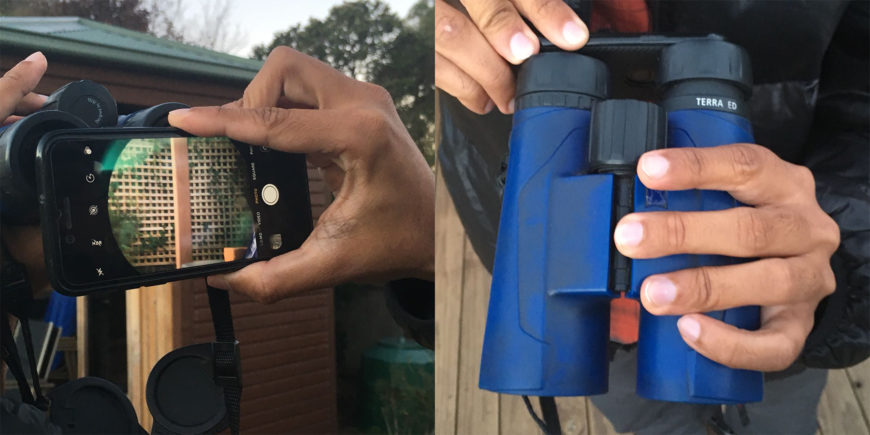
Holding the phone sideways is an option if your phone has a physical camera button on the side.
Step 4:
Now that you’ve got the image you want on your phone, hold your hands stable and click away. Usually the phone’s autofocus mechanism will bring your subject in focus. But if it doesn’t, you can turn the binoculars’ focussing wheel to bring the subject in focus.
Note: It is advised that you click as many photos as possible just in case.
Now that you’ve got your photos, just crop them up and use them as you wish!
Remember, this method can take a lot of practice, so don’t give up if it doesn’t work out straightaway. Given some time, one can even take photos of flying birds!
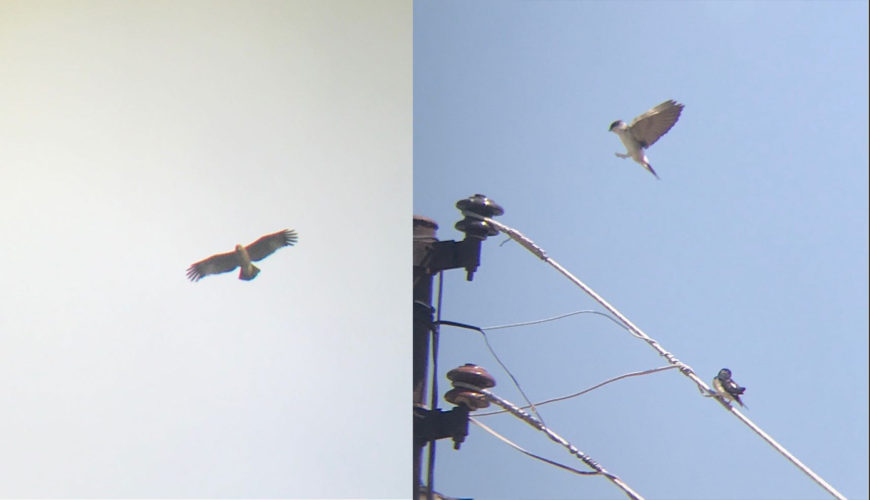
Birds in flight clicked using binoculars; Left: Indian Spotted Eagle, Right: Northern House-Martin
Some photos:
- Crab Plover
- Pied Bushchat
- Blyth’s Pipit
- Crested Serpent Eagle
Header Image: Indian Spot-billed Duck Anas poecilorhyncha © Chinmay Sawant/ Macaulay Library

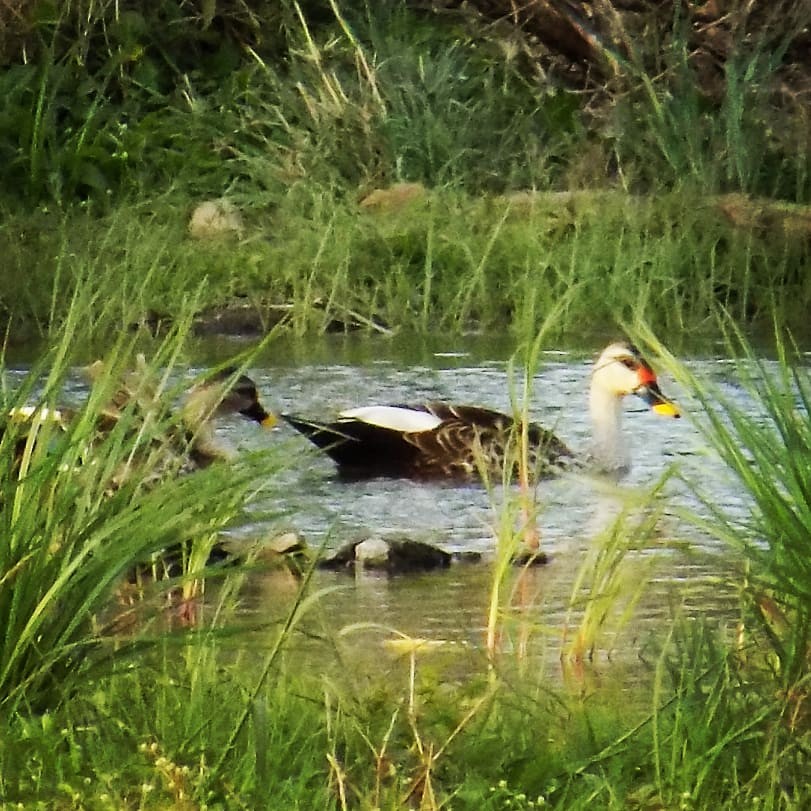
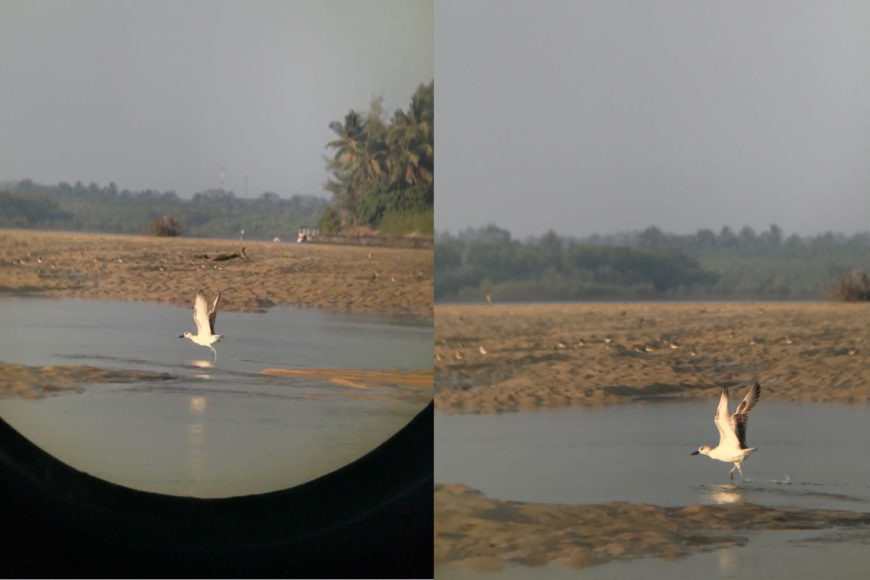
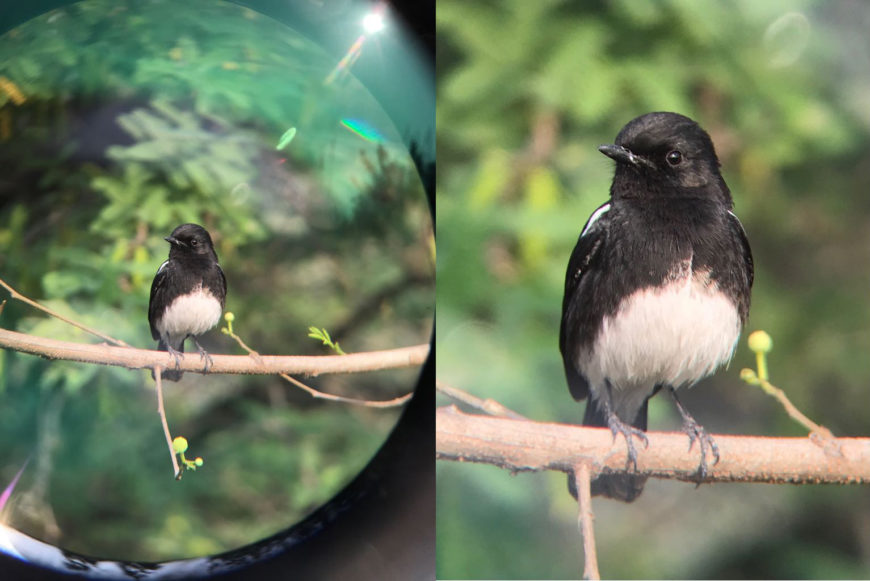
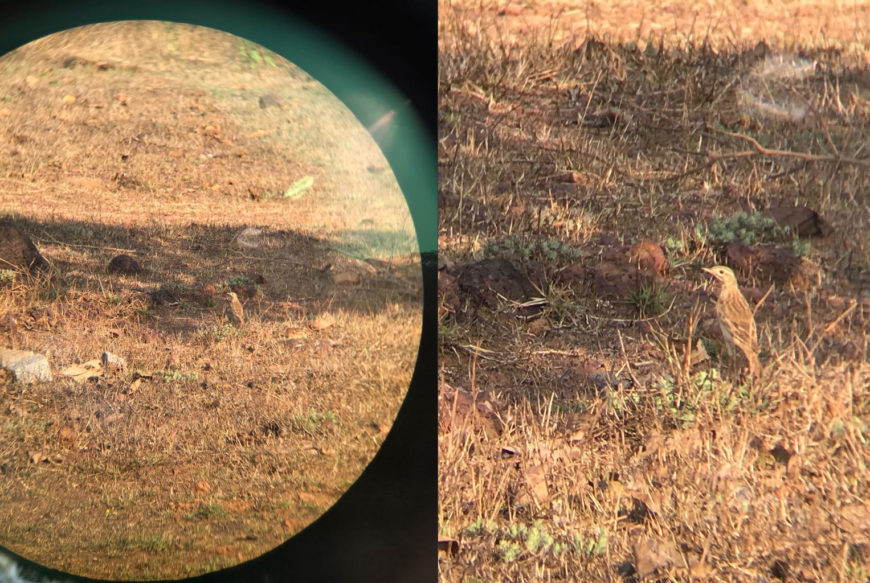
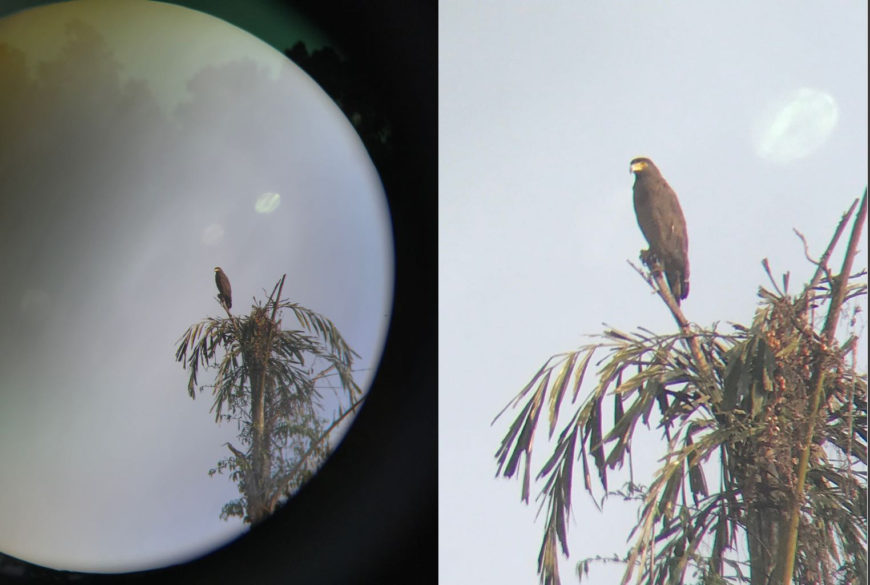
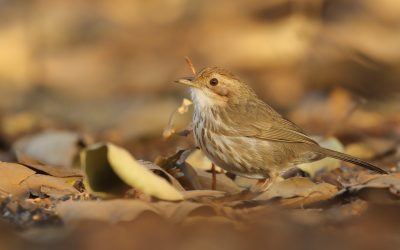
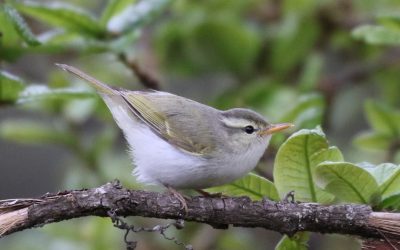
Coincidently, I just bought a 18X zoomlens made specially for smartphone cameras. It comes with clamp, a tripod & everything else one needs to fit the lens to a smartphone camera. Without the tripod, the image is a bit shaky, but that can be overcome by practising to keep the hands steady.
Lot of practice need for this & shaking hands _focusing are time consuming…Birding left aside if we concentrate on it.
I used with small camera & will try with mobile camera.
Thanks for sharing.
Thanks! Very useful, will give it a shot.
Now a days, smartphone adapters are available in market which can be used to hold phone on binocular
It’s great to clicked the image from binocular it’s little bit difficult but as you practice it it’s very interesting and nice images is clicked I used my 8×40 Olympus binocular it’s very nice.
thanks for an informative blog